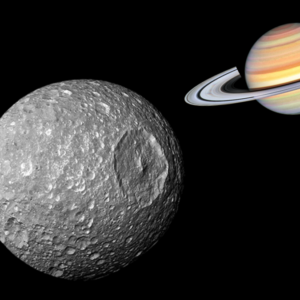
NASA’s Perseverance rover has successfully concluded its exploration of Jezero Crater, an ancient crater lake deemed an optimal location for the search for potential signs of extraterrestrial life. After surpassing its 1,000th day of operations, Perseverance has amassed 23 samples of regolith, comprising silicates, fine-grained silica, phosphates, and carbonates—ingredients suggestive of conditions conducive to life as we understand it.
Since its touchdown as the fifth rover on Mars, Perseverance has diligently examined the fan-shaped delta of an extinct water system. This exploration has enabled NASA scientists to trace the historical trajectory of Jezero Crater’s lake, revealing insights presented at the American Geophysical Union fall meeting in San Francisco.
Jezero Crater originated from an asteroid impact almost 4 billion years ago, as disclosed during the mission. Following Perseverance’s arrival in February 2021, the mission team uncovered that the crater floor is composed of igneous rock, resulting from underground magma or surface volcanic activity. Subsequently, the team identified the presence of sandstone and mudstone, indicative of the introduction of the first river into the crater hundreds of millions of years later.
The exploration further unveiled salt-rich mudstones above these rocks, hinting at the existence of a shallow lake undergoing evaporation. The scientific team hypothesizes that this lake expanded to a width of approximately 22 miles (35 kilometers) and a depth of 100 feet (30 meters). Subsequently, the influx of fast-flowing water transported boulders from external sources into Jezero, depositing them atop the delta and throughout the crater.
“We picked Jezero Crater as a landing site because orbital imagery showed a delta—clear evidence that a large lake once filled the crater. A lake is a potentially habitable environment, and delta rocks are a great environment for entombing signs of ancient life as fossils in the geologic record,” said Ken Farley of Caltech, Perseverance’s project scientist.
“After thorough exploration, we’ve pieced together the crater’s geologic history, charting its lake and river phase from beginning to end.”
The specimens gathered during the expedition have been meticulously preserved in tubes resembling sidewalk chalk in size, crafted from sterilized sapphire and heralded as the “cleanest place in the universe” prior to the mission’s commencement. This precautionary measure aimed to prevent any misinterpretation of potential life evidence upon return, ensuring that terrestrial contaminants were not mistakenly identified as Martian.
The sophisticated Planetary Instrument for X-ray Lithochemistry (PIXL), developed by NASA’s Jet Propulsion Laboratory, has played a pivotal role for the Perseverance rover. PIXL enables the rover to color-code distinct mineral signatures in the terrain beneath its wheels, guiding it to strategic drilling locations for sample collection. Notably, phosphate, a crucial element in human DNA and cell membranes, is depicted in green, while silica, an adept preserver of fossilized life on Earth, manifests as a Burnt Siena hue.
Although Perseverance’s instruments possess the capability to detect microscopic, fossil-like structures and chemical alterations indicative of ancient microbes, no conclusive evidence of such has been identified thus far. While the exploration of Jezero may have concluded, the rover, still at the forefront of technological prowess, remains active. Its next venture involves delving into the farthest reaches of the canyon where the river once flowed into the lake. Rich carbonate deposits, discernible in orbital images, beckon exploration. The rover anticipates the arrival of the sample return mission in the latter half of the decade, and until then, it awaits further discoveries with ample time at its disposal.
What are your thoughts? Please comment below and share this news!
True Activist / Report a typo


